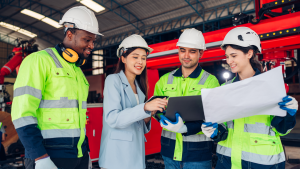The ISO certification process is very simple and straightforward. The process, timeline and certification cycle is pretty much the same for all certification bodies. ISO certifications follow a three year cycle. Given that the company complies with the requirements of the ISO standard, the certificate is issued after the initial audit on the first year. After three years, the company seeks recertification, and the process starts all over again.
The ISO Certification Process – Initial Year
A company has the option of conducting a pre-assessment audit which is performed before a certification audit takes place. This pre-assessment audit determines the degree of conformance of an organization’s management system(s) with the requirements of a standard. No formal report is generated at this stage.
During the first year of the ISO certification process, the company must undergo a two-stage audit. The objective of a Stage 1 Audit is to review your current management system arrangements and verify how close you are to meeting your chosen standard’s requirements. Here, the auditor will obtain information about the organization’s processes, documents, operations, and scope of management systems in place including its control.
Next comes the Stage 2 Audit. The objective of a Stage 2 Audit is to recommend the company for certification. The auditor conducts a thorough assessment of the company’s implementation of the management system and seeks evidence that the organization is following the documentation (policies, procedures, etc.). A comprehensive report is provided, detailing all areas of conformity or nonconformity. If no major non-conformances are issued, the auditor will recommend your organization for certification.
The ISO Certification Process – Year 2 and Year 3
For the following 2 years, surveillance audits are required to verify the ongoing implementation and maintenance of your management system and ensure ongoing compliance with the standard(s). The frequency of surveillance audit depends on many factors (such as size and scope of the organization, number of certified location, etc.), but typically will be performed annually.
Surveillance assessments are typically a smaller audit, focusing on key areas of the standard. A report is provided, detailing all areas of conformance or nonconformance. If no major non-conformities are issued, your certification status will be maintained.
To learn more about the ISO certification process, please write to us at contact@qms-certification.com.










